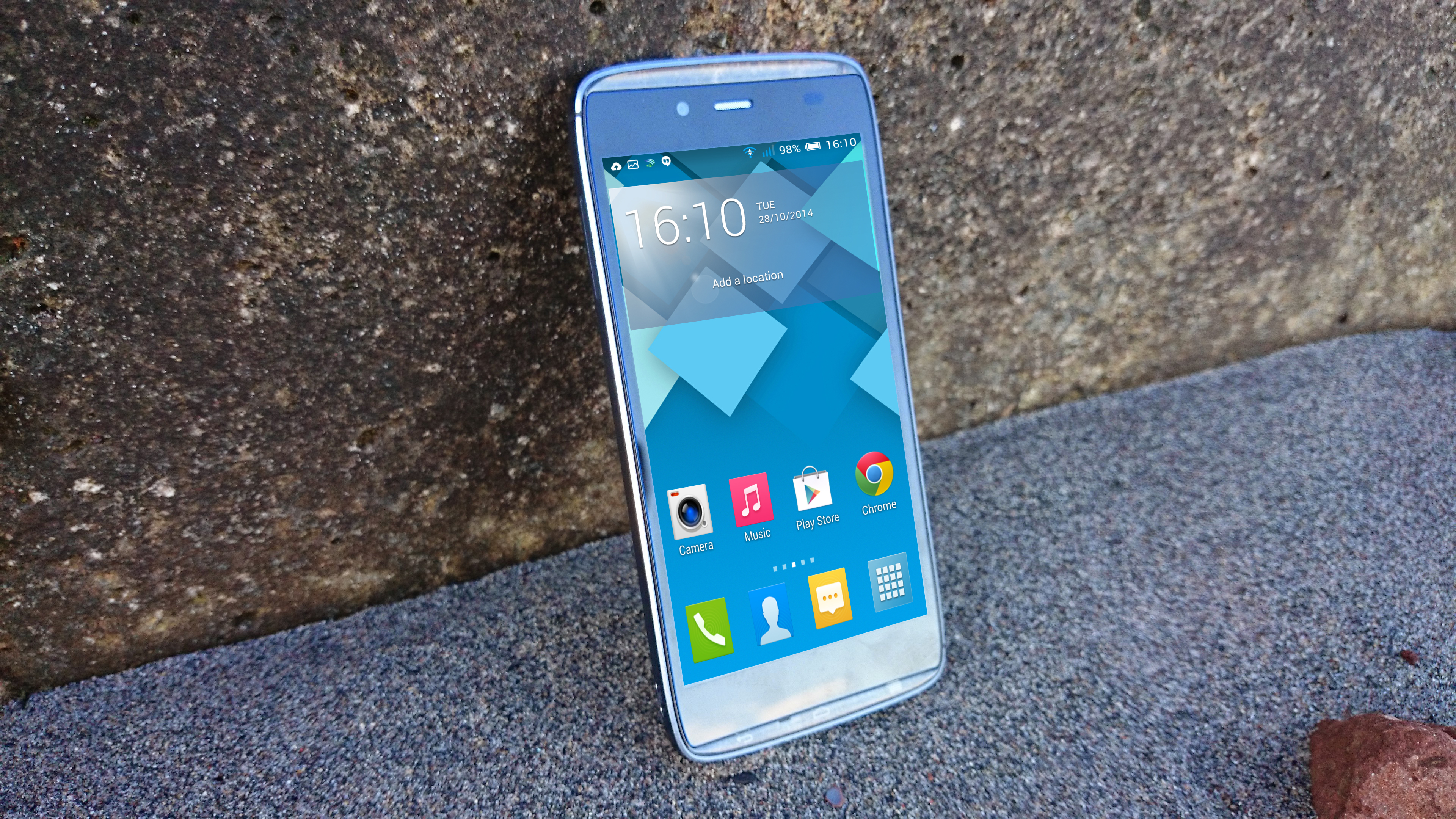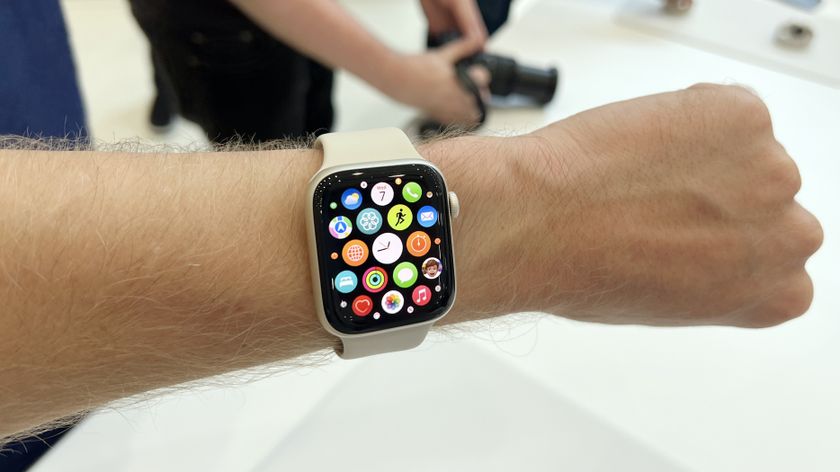TechRadar Verdict
Easily the best-looking smartphone Alcatel has ever released, but you'll soon realize that beauty is only skin deep. This is just another Android mid-ranger, and the specs and performance fall well short of the premium design's promise.
Pros
- +
Premium design
- +
Unique LEDs
- +
Decent camera
Cons
- -
Poor battery life
- -
Old version of Android
- -
Stutters and lags
- -
Oversaturated display
Why you can trust TechRadar
It's always tricky for a budget brand to climb the ladder and Alcatel's attempt to break out of the basement and claim some mid-range success with the Idol Alpha is a good example.
At first glance this looks like an expensive smartphone, but the premium aluminium exterior and intriguing translucent strips are concealing a multitude of sins.
Looking past the beautiful body we find a 4.7-inch 720p screen, a quad-core processor clocked at 1.2GHz, just 1GB of RAM and a 13MP main camera. There are a lot of disappointments with this phone, but the main stumbling block for potential buyers is going to be the price tag.
The average selling price of Android smartphones has been falling steadily for the last couple of years. IDC reckons it will be as low £160 this year for an unlocked phone. The market is fiercely competitive and at around £280 off-contract, the Alcatel OneTouch Idol Alpha doesn't stand out of the mid-range crowd.
If it's looking to attract people upgrading from the budget sector, then it's not working hard enough.
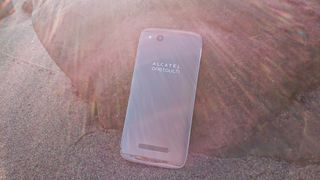
Consider that £229 will get you the vastly superior OnePlus One. Shop around and an extra few quid will score you an LG G3. You may even prefer one of the now heavily discounted flagships of yesteryear, like the Galaxy S4.
Why does Alcatel think you should fork out so much money for the Idol Alpha? Limited availability means that you probably will need to buy it off-contract if you want one. Is it worth spending nearly £300 on?
Design
After removing the Alcatel OneTouch Idol Alpha from the unusual metal cylinder it comes in I was genuinely impressed. It has an aluminium body with polished chamfered edges and there are two interesting translucent strips at the top and bottom.
It's a nice size and it's easy to operate one-handed. It measures 138 x 66.6 x 7.5 mm and weighs in at 117.4g.
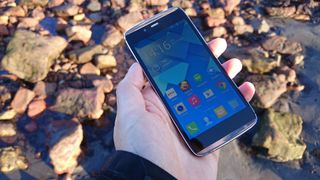
The aluminium frame feels cold and expensive, not unlike the iPhone 5S. It gives the Idol Alpha a satisfying weight, but the premium bubble bursts when you discover that the metallic looking back is actually plastic.
Sadly the translucent strips are also plastic and they protrude slightly, which definitely makes the idol Alpha feel a little less sexy. Their purpose becomes apparent when you turn the phone on and a series of LEDs lights them up. It's a really nice, imaginative twist on your standard LED notification.
There's a speaker and front-facing camera at the top and you'll find the standard three capacitive buttons below the screen, although they are unmarked and don't light up, which is a little strange.
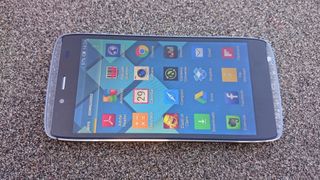
The icons to identify them appear on the translucent strip at the bottom. The haptic feedback makes it clear when you've hit them, as does the onscreen action, but it does feel odd at first.
Flipping over to the back we find the camera lens and flash at the top left, then the Alcatel logo with a shiny embossed OneTouch logo beneath.
At the bottom there's a huge speaker grille with a knobbly bit either side, presumably to stop the grille touching surfaces when you put it down and reduce the chance of dust getting in there.
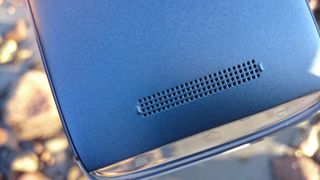
The back doesn't come off, so there's no removable battery, and there's no microSD card slot either.
Both the top and bottom edges are naked, which is aesthetically pleasing, but not practical. The biggest annoyance is the microUSB port which is right at the bottom of the left spine. This makes it awkward to use the Idol Alpha when it's charging.
To make matters worse there is no 3.5mm headphone jack. You have to use the supplied adapter to plug your headphones into the microUSB port if you want to use them.
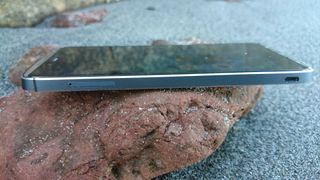
Having that jut out the side makes it awkward to use comfortably with the phone in your pocket, which is why you generally find the headphone port on the top of a phone.
Nearer the top of the left edge you'll find a SIM tray. You pop it open using the supplied tool and it takes a microSIM card.
Jumping over to the right edge we find the power button and the volume rocker above it. They look stylish, but they only protrude a tiny bit so they aren't always easy to press without looking.
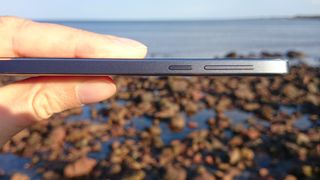
My review model is a grey, slate colour, but you can also pick the Idol Alpha up in three shades of gold.
The 4.7-inch IPS LCD screen has a resolution of 1280 x 720 pixels which gives it a pixel density of 312ppi. It looks just fine at first glance. If you're coming from an older phone it won't bother you, but it's obviously inferior to 1080p and way behind the QHD displays that are hitting the market now.
All in all the Idol Alpha's design is its strongest selling point. The aluminium frame is reminiscent of the iPhone 5S and the translucent strips are a really nice idea that works well, but look a little closer and you can see the premium quality isn't consistent.
It's a mixed bag with some odd choices, most notably are the microUSB placement and lack of a headphone jack.
Most Popular




